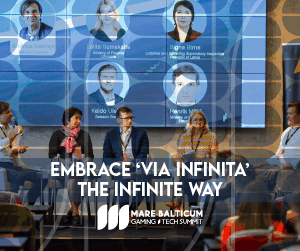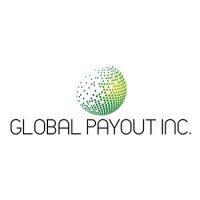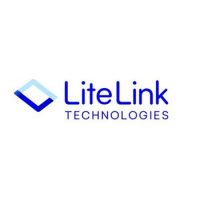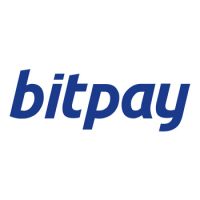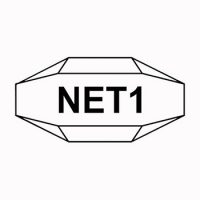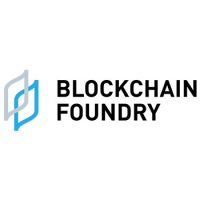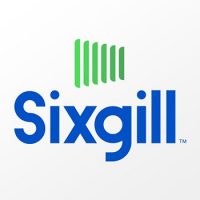Blockchain
RETRANSMISSION: HIVE Blockchain October 2022 Bitcoin Production was 307 BTC mined and 3,311 BTC HODL on its Balance Sheet
This news release constitutes a “designated news release” for the purposes of the Company’s prospectus supplement dated September 2, 2022 to its amended and restated short form base shelf prospectus dated January 4, 2022.
Vancouver, British Columbia–(Newsfile Corp. – November 7, 2022) – HIVE Blockchain Technologies Ltd. (TSXV: HIVE) (NASDAQ: HIVE) (FSE: HBFA) (the “Company” or “HIVE”) is pleased to announce the production figures from the Company’s global Bitcoin operations for the month of October 2022, with 307 Bitcoin produced and a BTC HODL balance of 3,311 Bitcoin as of November 5, 2022.
Summary Overview:
- HIVE has a strong balance sheet, with approximately $70 million USD of Bitcoin, and no expensive borrowing against equipment like ASICs or GPU chips or digital assets.
- HIVE owns all of its ASICs and GPUs, with clear title; there are no debt servicing payments associated with any of our digital assets or crypto mining hardware.
- HIVE has produced 307 Bitcoin in the month of October, from ASIC and GPU mining operations, representing an average of 115 Bitcoin Per Exahash.
- HIVE has received all 140 PH/s of its Micro BT M30S++ miners which are in the process of being installed (currently approximately 80 PH/s have been installed).
- HIVE expects to receive over 1 Exahash of the HIVE Intel Bitcoin ASIC miners projected growth in the next 3-4 months with scheduled deliveries.
October 2022 Production Figures
HIVE is pleased to announce its October 2022 production figures and mining capacity:
- 262 Bitcoin Produced from ASIC mining operations;
- 2.38 Exahash of Bitcoin mining capacity at the end of October, with an average hashrate of 2.28 Exahash of Bitcoin mining capacity during the month of October from ASIC mining operations, with an average of 115 Bitcoin per Exahash;
- An additional 45 Bitcoin were mined by our GPUs in October.
Frank Holmes, Executive Chairman of HIVE stated, “We are very happy to be producing over 300 Bitcoin per month, which is about 1% of the global network, even when network difficulty is at an all-time high. We have sold all our Ethereum holdings. In October we produced an average of 9.9 Bitcoin per day.”
Mr. Holmes further stated, “I am very pleased with HIVE’s growth of Bitcoin ASIC hashrate over the last year, without taking on the risk of expensive equipment financing or Bitcoin backed loans. Most of the mining industry is plagued with loans and debt, where either their Bitcoin balance sheet is encumbered, or the ASIC hardware they have purchased has expensive debt associated with it. The leveraging of assets during the bull market is causing great stress for our peers in the mining industry, as asset values have corrected to bear market conditions. HIVE has maintained a strong position and pursued a steady rate of growth as our Bitcoin mining footprint expands, without expensive high-risk debt and without encumbering or collateralizing any of our Bitcoin assets.”
Aydin Kilic, President & COO of HIVE noted, “We continue to strive for operational excellence, ensuring that as we scale our hashrate we also optimize our uptime, to ensure ideal Bitcoin output figures.”
Mr. Kilic continued, “Our fleet of GPU’s now use a unique algorithm to mine altcoins, which are exchanged for Bitcoin, therefore HIVE earns and takes custody of Bitcoin only. This month our GPU fleet produced 45 BTC. This is in addition to the 262 Bitcoin produced from our Bitcoin ASIC mining operations during October, for a total of 307 Bitcoin produced.”
The Company’s total Bitcoin production in October 2022 was:
- 307 BTC Produced
- 9.9 BTC produced per day on average
- 2.77 Exahash of BTC Hashrate (Bitcoin ASIC hashrate plus Bitcoin GPU hashrate) as of October 31, comprised of 2.38 Exahash of Bitcoin ASIC hashrate and 0.39 Exahash of Bitcoin GPU hashrate, with a monthly average of 2.67 Exahash, which is equal to 115 Bitcoin per Exahash.
HIVE Current Bitcoin Production
As of November 2, HIVE is producing an average of over 9.5 Bitcoin per day from ASIC and GPU production, comprised of over 8 Bitcoin per day from our ASIC fleet and over 1 Bitcoin per day from our GPU fleet.
The Company has received 140 PH/s of MicroBT M30S++ miners. These machines have been partially installed with approximately 66 PH/s of remaining as of press time. It is expected that this will increase HIVE’s ASIC hashrate to approximately 2.44 Exahash during the month of November once installed. In addition to the GPU based mining which provides an equivalent 0.39 Exahash of Bitcoin hashrate, HIVE’s expected total Bitcoin hashrate from ASICs and GPUs will be over 2.7 Exahash by the end of November.
Bitcoin HODL Update
The Company notes its balance sheet of Bitcoin has grown in the last fiscal quarter, where at period end June 30, 2022, HIVE had 3,231 Bitcoin, and as of November 5, 2022 HIVE has 3,311 Bitcoin, with a market value of over $70 million USD.
The Company notes this increase in Bitcoin treasury comes during a time where the Company has completed capital expenditure commitments for ASIC and infrastructure growth. The Company believes that a prudent treasury management strategy with a term long view to protect the balance sheet from market volatility and build value for shareholders, is of key importance in the crypto mining industry.
Network Mining Difficulty
Network difficulty factors are a significant variable in the Company’s gross profit margins. The Bitcoin network difficulty saw a total 17% increase during the month of October. Accordingly, Bitcoin mining difficulty had increased substantively for the month of October relative to the month of September.
About HIVE Blockchain Technologies Ltd.
HIVE Blockchain Technologies Ltd. went public in 2017 as the first cryptocurrency mining company with a green energy and ESG strategy.
HIVE is a growth-oriented technology stock in the emergent blockchain industry. As a company whose shares trade on a major stock exchange, we are building a bridge between the digital currency and blockchain sector and traditional capital markets. HIVE owns state-of-the-art, green energy-powered data centre facilities in Canada, Sweden, and Iceland, where we endeavor to source only green energy to mine digital assets such as Bitcoin on the cloud. Since the beginning of 2021, HIVE has held in secure storage the majority of its treasury of ETH and BTC derived from mining rewards. Our shares provide investors with exposure to the operating margins of digital currency mining, as well as a portfolio of cryptocurrencies, primarily BTC, with the ETH subsequently sold. Because HIVE also owns hard assets such as data centers and advanced multi-use servers, we believe our shares offer investors an attractive way to gain exposure to the cryptocurrency space.
We encourage you to visit HIVE’s YouTube channel here to learn more about HIVE.
For more information and to register to HIVE’s mailing list, please visit www.HIVEblockchain.com. Follow @HIVEblockchain on Twitter and subscribe to HIVE’s YouTube channel.
On Behalf of HIVE Blockchain Technologies Ltd.
“Frank Holmes”
Executive Chairman
For further information please contact:
Frank Holmes
Tel: (604) 664-1078
Neither the TSX Venture Exchange nor its Regulation Services Provider (as that term is defined in policies of the TSX Venture Exchange) accepts responsibility for the adequacy or accuracy of this news release
Forward-Looking Information
Except for the statements of historical fact, this news release contains “forward-looking information” within the meaning of the applicable Canadian securities legislation that is based on expectations, estimates and projections as at the date of this news release. “Forward-looking information” in this news release includes, but is not limited to: business goals and objectives of the Company; the results of operations for October 2022; the HODL strategy adopted by the Company; the acquisition, deployment and optimization of the mining fleet and equipment; the continued viability of its existing Bitcoin mining operations; and other forward-looking information concerning the intentions, plans and future actions of the parties to the transactions described herein and the terms thereon.
Factors that could cause actual results to differ materially from those described in such forward-looking information include, but are not limited to, the volatility of the digital currency market; the Company’s ability to successfully mine digital currency; the Company may not be able to profitably liquidate its current digital currency inventory as required, or at all; a material decline in digital currency prices may have a significant negative impact on the Company’s operations; the volatility of digital currency prices; continued effects of the COVID-19 pandemic may have a material adverse effect on the Company’s performance as supply chains are disrupted and prevent the Company from carrying out its expansion plans or operating its assets; protection of proprietary rights; the effect of government regulation and compliance on the Company and the industry; network security risks; the ability of the Company to maintain properly working systems; reliance on key personnel; an increase in network difficulty may have a significant negative impact on operations; the anticipated growth and sustainability of hydroelectricity for the purposes of cryptocurrency mining in the applicable jurisdictions; the inability to maintain reliable and economical sources of power for the Company to operate cryptocurrency mining assets; the risks of an increase in the Company’s electricity costs, cost of natural gas, changes in currency exchange rates, energy curtailment or regulatory changes in the energy regimes in the jurisdictions in which the Company operates and the adverse impact on the Company’s profitability; future capital needs and uncertainty of additional financing, including the Company’s ability to utilize the Company’s at-the-market offering (the “ATM Program”), the prices at which the Company may sell Common Shares in the ATM Program and other equity issuances resulting in dilution, as well as capital market conditions in general; the impact of energy curtailment or regulatory changes in the energy regimes in the jurisdictions in which the Company operates; and other related risks as more fully set out in the registration statement of Company and other documents disclosed under the Company’s filings at www.sec.gov/EDGAR and www.sedar.com.
The forward-looking information in this news release reflects the current expectations, assumptions and/or beliefs of the Company based on information currently available to the Company. In connection with the forward-looking information contained in this news release, the Company has made assumptions about the Company’s objectives, goals or future plans, the timing thereof and related matters. The Company has also assumed that no significant events occur outside of the Company’s normal course of business. Although the Company believes that the assumptions inherent in the forward-looking information are reasonable, forward-looking information is not a guarantee of future performance and accordingly undue reliance should not be put on such information due to the inherent uncertainty therein. The Company disclaims any intention or obligation to update or revise any forward-looking information, whether as a result of new information, future events or otherwise, other than as required by law.
Blockchain
Glidelogic Corp. Announces Revolutionary AI-Generated Content Copyright Protection Solution
Blockchain
Ethereum ETFs Aren’t Blockchain But Is A Revolutionary Tech: Top 6 Amazing Reasons To Invest In Them
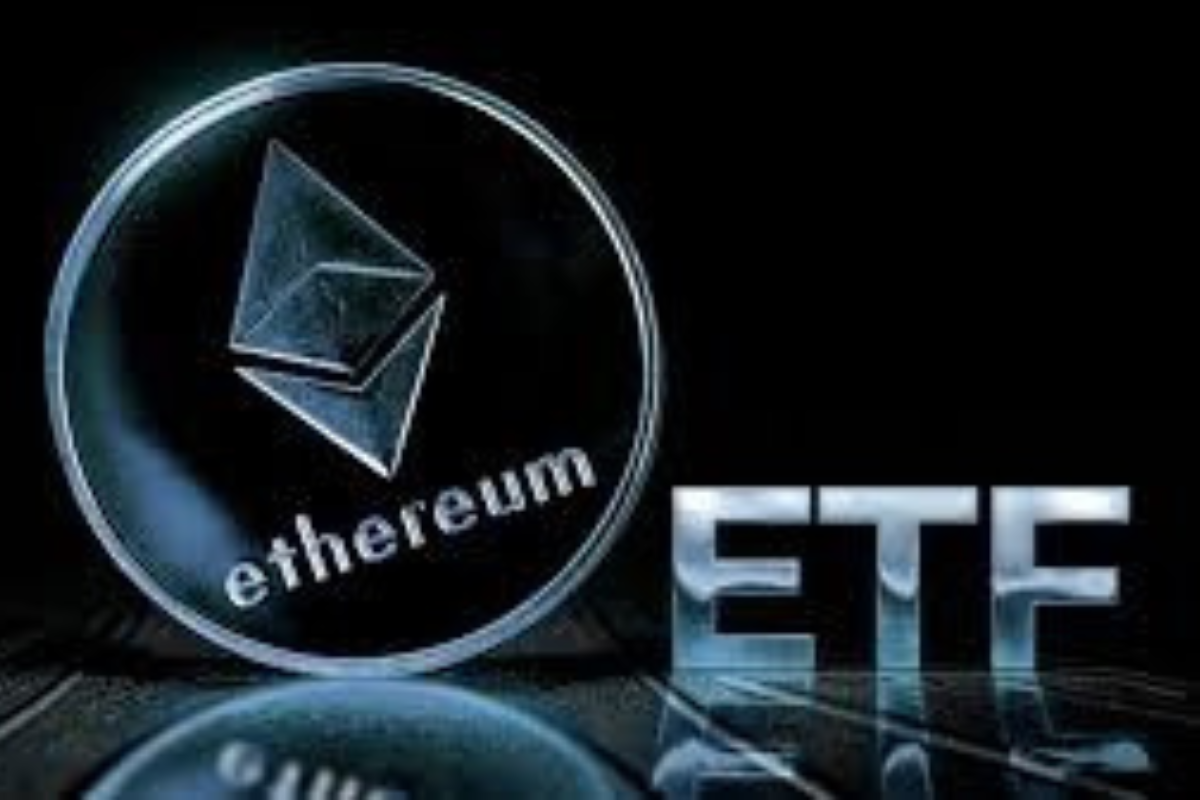
The financial landscape is rapidly evolving, with the integration of blockchain technology and cryptocurrencies becoming more prominent. Among these, Ethereum ETFs (Exchange-Traded Funds) have emerged as a significant investment vehicle, offering exposure to the Ethereum blockchain’s native cryptocurrency, Ether (ETH), without requiring direct ownership. However, it’s crucial to understand that Ethereum ETFs are distinct from the blockchain itself and serve different purposes in the investment world.
Understanding Ethereum and ETFs
Ethereum: A decentralized platform that enables the creation and execution of smart contracts and decentralized applications (dApps). It operates using its cryptocurrency, Ether (ETH), which fuels the network.
ETF (Exchange-Traded Fund): A type of investment fund that holds a collection of assets and is traded on stock exchanges. ETFs can include various asset classes, such as stocks, commodities, or bonds.
Ethereum ETFs: The Intersection of Traditional Finance and Cryptocurrency
An Ethereum ETF provides a way for investors to gain exposure to the price movements of Ether without directly purchasing the cryptocurrency. This is achieved through an ETF structure, where the fund holds assets linked to the value of Ether, and investors can buy shares of the ETF on traditional stock exchanges.
Key Features of Ethereum ETFs:
- Indirect Exposure: Investors gain exposure to Ether’s price changes without needing to manage or store the cryptocurrency themselves.
- Regulatory Compliance: Unlike the relatively unregulated cryptocurrency market, ETFs operate under the oversight of financial regulators, offering a layer of investor protection.
- Accessibility: Ethereum ETFs are available through traditional brokerage platforms, making them accessible to a broader range of investors.
Why Invest in an Ethereum ETF?
- Diversification: Including an Ethereum ETF in a portfolio can provide exposure to the cryptocurrency market, potentially enhancing diversification beyond traditional assets.
- Convenience and Familiarity: ETFs are a familiar investment product, simplifying the process of investing in cryptocurrencies.
- Professional Management: ETF managers handle the investment decisions, including the buying and selling of assets, which can be advantageous for those less familiar with the cryptocurrency space.
- Regulatory Oversight: ETFs are subject to regulatory scrutiny, potentially offering more safety and transparency compared to direct cryptocurrency investments.
- Potential for Growth: As the cryptocurrency market grows, ETFs linked to assets like Ether may benefit from rising prices.
Key Differences Between Ethereum and Ethereum ETFs
While both are related to the Ethereum blockchain, Ethereum itself and Ethereum ETFs represent different forms of investment:
- Ethereum (ETH):
- Direct ownership of the cryptocurrency.
- Full exposure to Ethereum’s features, including staking and network participation.
- Traded on cryptocurrency exchanges.
- Highly volatile and largely unregulated.
- Ethereum ETF:
- Indirect exposure through shares representing Ether’s value.
- Traded on traditional stock exchanges under regulatory oversight.
- Offers a more stable and familiar investment structure.
- Typically lower volatility compared to direct cryptocurrency ownership.
Future Considerations for Ethereum ETFs
The approval and launch of Ethereum ETFs mark a significant milestone in bringing cryptocurrencies closer to mainstream finance. They offer a convenient and regulated means for investors to gain exposure to the growing digital assets market. However, they also come with limitations, such as not allowing direct participation in the Ethereum ecosystem’s innovations, like dApps and smart contracts.
As the market evolves, we may see more sophisticated financial products that better capture the full potential of the Ethereum ecosystem. For now, Ethereum ETFs provide a balanced option for those interested in cryptocurrency exposure within the framework of traditional finance.
In conclusion, while Ethereum ETFs offer a gateway into the world of digital assets, they should be viewed as complementary to, rather than a replacement for, direct investment in the underlying blockchain technologies. Investors should carefully consider their investment goals, risk tolerance, and the unique attributes of both Ethereum and Ethereum ETFs when making investment decisions.
Source: blockchainmagazine.net
The post Ethereum ETFs Aren’t Blockchain But Is A Revolutionary Tech: Top 6 Amazing Reasons To Invest In Them appeared first on HIPTHER Alerts.
Blockchain
Nexo Reaffirms Commitment to Data Protection with SOC 3 and SOC 2 Compliance
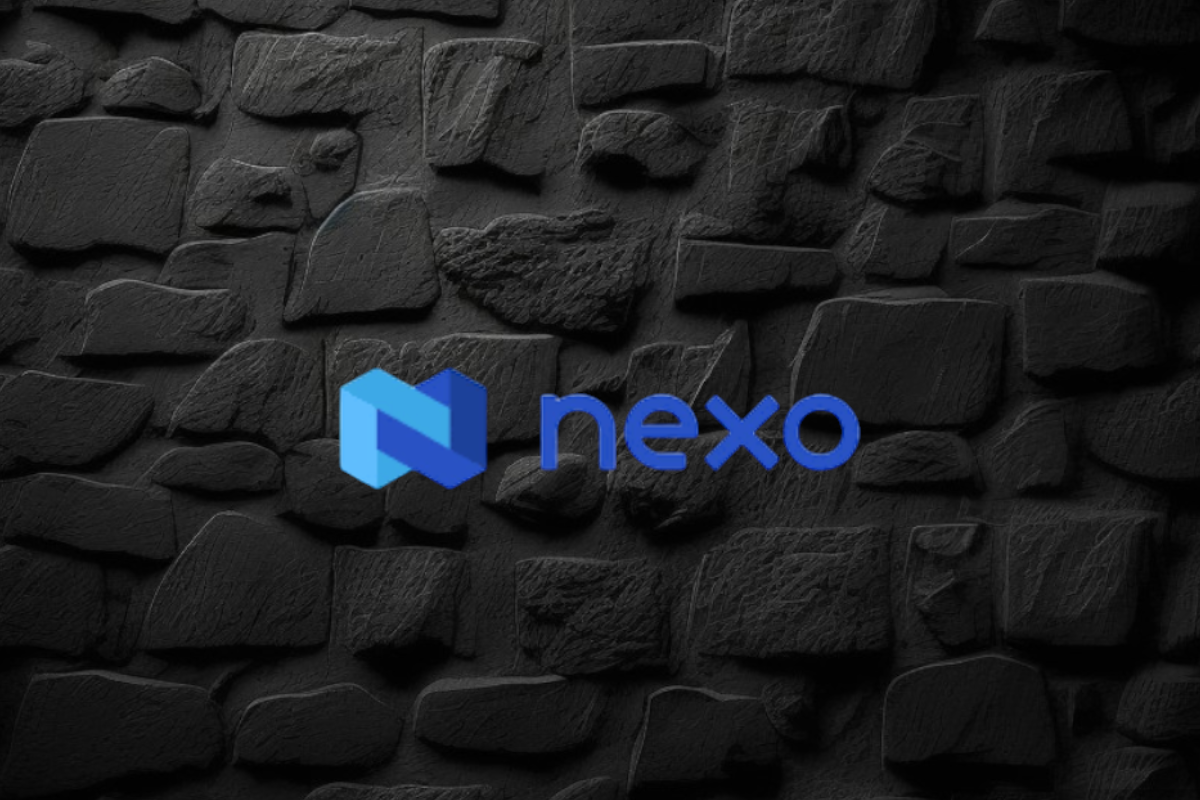
Nexo, a leading institution in the digital assets industry, has reinforced its commitment to data security by renewing its SOC 2 Type 2 audit and attaining a new SOC 3 Type 2 assessment without any exceptions. This rigorous audit process, conducted by A-LIGN, a respected independent auditor specializing in security compliance, confirms Nexo’s adherence to stringent Trust Service Criteria for Security and Confidentiality.
Key Achievements and Certifications
- SOC 2 and SOC 3 Compliance:
- SOC 2 Type 2: This audit evaluates and reports on the effectiveness of an organization’s controls over data security, particularly focusing on the confidentiality, integrity, and availability of systems and data.
- SOC 3 Type 2: This public-facing report provides a summary of SOC 2 findings, offering assurance to customers and stakeholders about the robustness of Nexo’s data security practices.
- Additional Trust Service Criteria:
- Nexo expanded the scope of these audits to include Confidentiality, showcasing a deep commitment to protecting user data.
- Security Certifications:
- The company also adheres to the CCSS Level 3 Cryptocurrency Security Standard, and holds ISO 27001, ISO 27017, and ISO 27018 certifications, awarded by RINA. These certifications are benchmarks for security management and data privacy.
- CSA STAR Level 1 Certification:
- This certification demonstrates Nexo’s adherence to best practices in cloud security, further solidifying its position as a trusted partner in the digital assets sector.
Impact on Customers and Industry Standards
Nexo’s rigorous approach to data protection and compliance sets a high standard in the digital assets industry. By achieving these certifications, Nexo provides its over 7 million users across more than 200 jurisdictions with confidence in the security of their data. These achievements not only emphasize the company’s dedication to maintaining top-tier security standards but also highlight its proactive stance in fostering trust and transparency in digital asset management.
Nexo’s Broader Mission
As a premier institution for digital assets, Nexo offers a comprehensive suite of services, including advanced trading solutions, liquidity aggregation, and tax-efficient credit lines backed by digital assets. Since its inception, the company has processed over $130 billion, showcasing its significant impact and reliability in the global market.
In summary, Nexo’s successful completion of SOC 2 and SOC 3 audits, along with its comprehensive suite of certifications, underscores its commitment to the highest standards of data security and operational integrity. This dedication positions Nexo as a leader in the digital assets space, offering unparalleled security and peace of mind to its users.
Source: blockchainreporter.net
The post Nexo Reaffirms Commitment to Data Protection with SOC 3 and SOC 2 Compliance appeared first on HIPTHER Alerts.
-

 Blockchain4 days ago
Blockchain4 days agoBinance Cleared to Invest Customer Assets in US Treasury Bills: What It Means for Crypto and Dollar Dominance
-

 Blockchain4 days ago
Blockchain4 days agoDeep Custodian Limited Obtains Hong Kong TCSP License, Authorized to Provide Compliant Crypto Asset Custody Services
-

 Blockchain Press Releases2 days ago
Blockchain Press Releases2 days agoBybit Web3 Livestream Explores Cultural Meme Coins and Other Trends
-

 Blockchain2 days ago
Blockchain2 days agoBlockchain Intelligence Group adds additional modules and launches its Certified Cryptocurrency Investigator – Advanced Series
-

 Blockchain Press Releases2 days ago
Blockchain Press Releases2 days agoBybit Surges to Second Place in Derivatives Market, Solidifying Position as Global Crypto Trading Leader
-

 Blockchain3 days ago
Blockchain3 days agoBitAngels Network Hosts Blockchain Pitch Competition in Nashville
-

 Blockchain3 days ago
Blockchain3 days agoCoinW Continues Expedition Trek And Double Down On Presence At ETH-Native Events
-

 Blockchain5 days ago
Blockchain5 days agoWOO X and OpenTrade Enhance RWA Earn Vaults with Flexible Withdrawals















